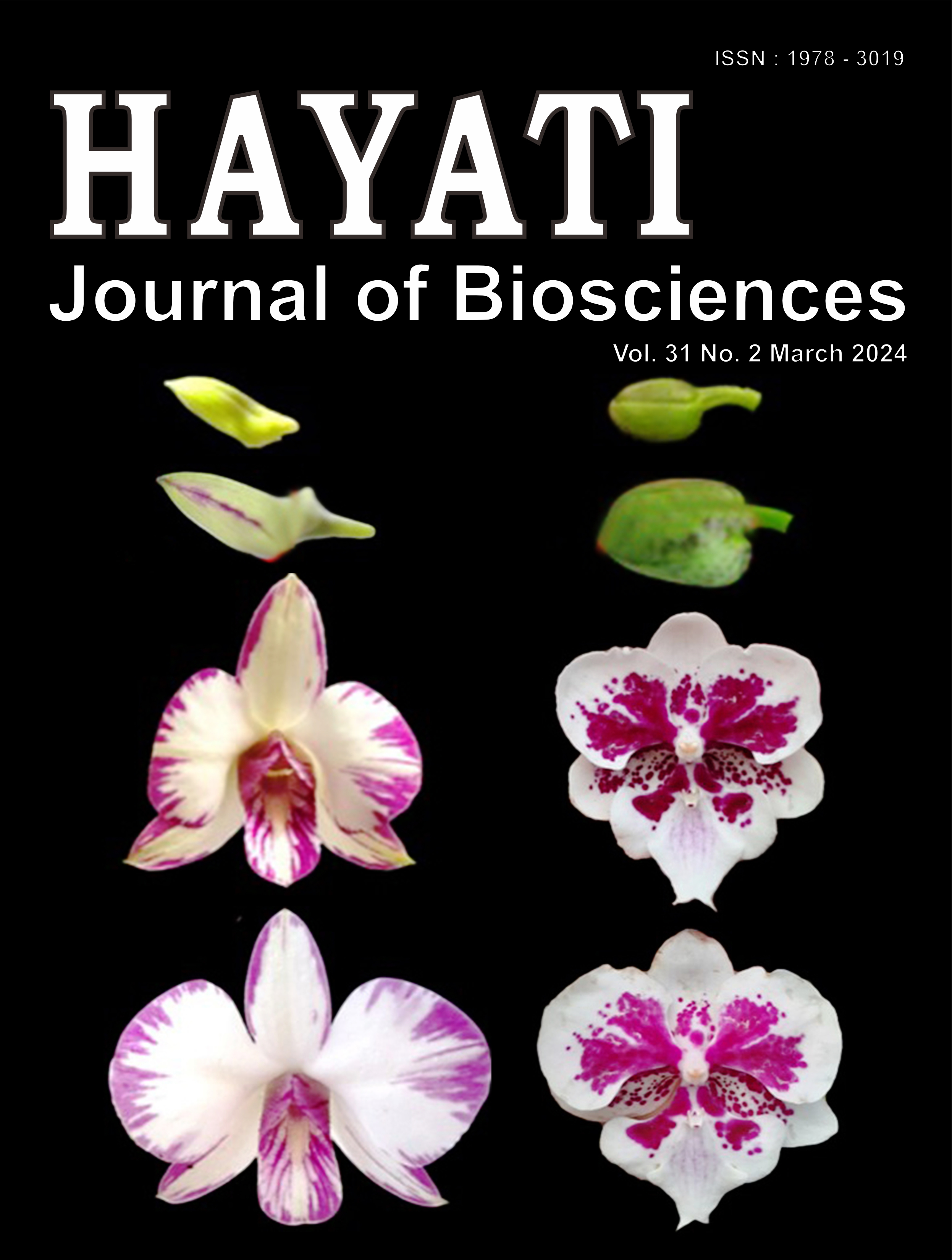Bioethanol Production from Non-Conventional Yeasts Wickerhamomyces anomalus (Pichia anomala) and Detection of ADH1 Gene
Abstract
Bioethanol is an organic compound resulted from the fermentation of sugar substrates by microorganisms which is used as alternative energy sources. During bioethanol fermentation yeast are exposed to various fermentation stresses, including temperature, osmotic, and oxidative stresess. Such conditions may decrease ethanol production. We previously isolated fermentation-stress tolerance yeast isolates from traditional Balinese beverages, identified as Wickerhamomyces anomalus BT2, BT5, and BT6. However no data available regarding the bioethanol production of those isolates. Our study indicates that these strains could utilize various sugar substrates (glucose, xylose, maltose, sucrose) in oxidative fermentative media. The highest value of substrate utilization efficiency following 48 hours fermentation was shown by BT6 on glucose (61.02%), BT 2 on xylose (55.44%) and maltose (60.90%). Measurement of ethanol production by Gas Chromatography showed that the strains were able to produce higher ethanol on the glucose substrate than other substrates. For instance, BT6 could produce the highest ethanol production (5.00 g/L) amongst strains tested by using glucose as substrate. Yet, the particular strains could only produce 0.30 g/L and 0.65 g/L by using xylose and maltose, respectively. For further genetic engineering purposes, we detected ADH1 gene from all three isolates, with high homology to the alcohol dehydrogenase from Saccharomyces cerevisiae, Geobacillus stearothermophilus and Pseudomonas aeruginosa. Further strain development can be carried out targeting the ADH1 gene, important for ethanol fermentation.
Downloads
Copyright (c) 2023 Muhammad Fadhil Fathiah, Faisal Diniamal Hartono, Rika Indri Astuti, Sri Listiyowati, Anja Meryandini

This work is licensed under a Creative Commons Attribution-NonCommercial 4.0 International License.
HAYATI J Biosci is an open access journal and the article's license is CC-BY-NC. This license lets others distribute, remix, tweak, and build upon author's work, as long as they credit the original creation. Authors retain copyright and grant the journal/publisher non exclusive publishing rights with the work simultaneously licensed under a https://creativecommons.org/

























.png) IPB University
IPB University Department of Biology
Department of Biology The Indonesian Biological Society
The Indonesian Biological Society 

